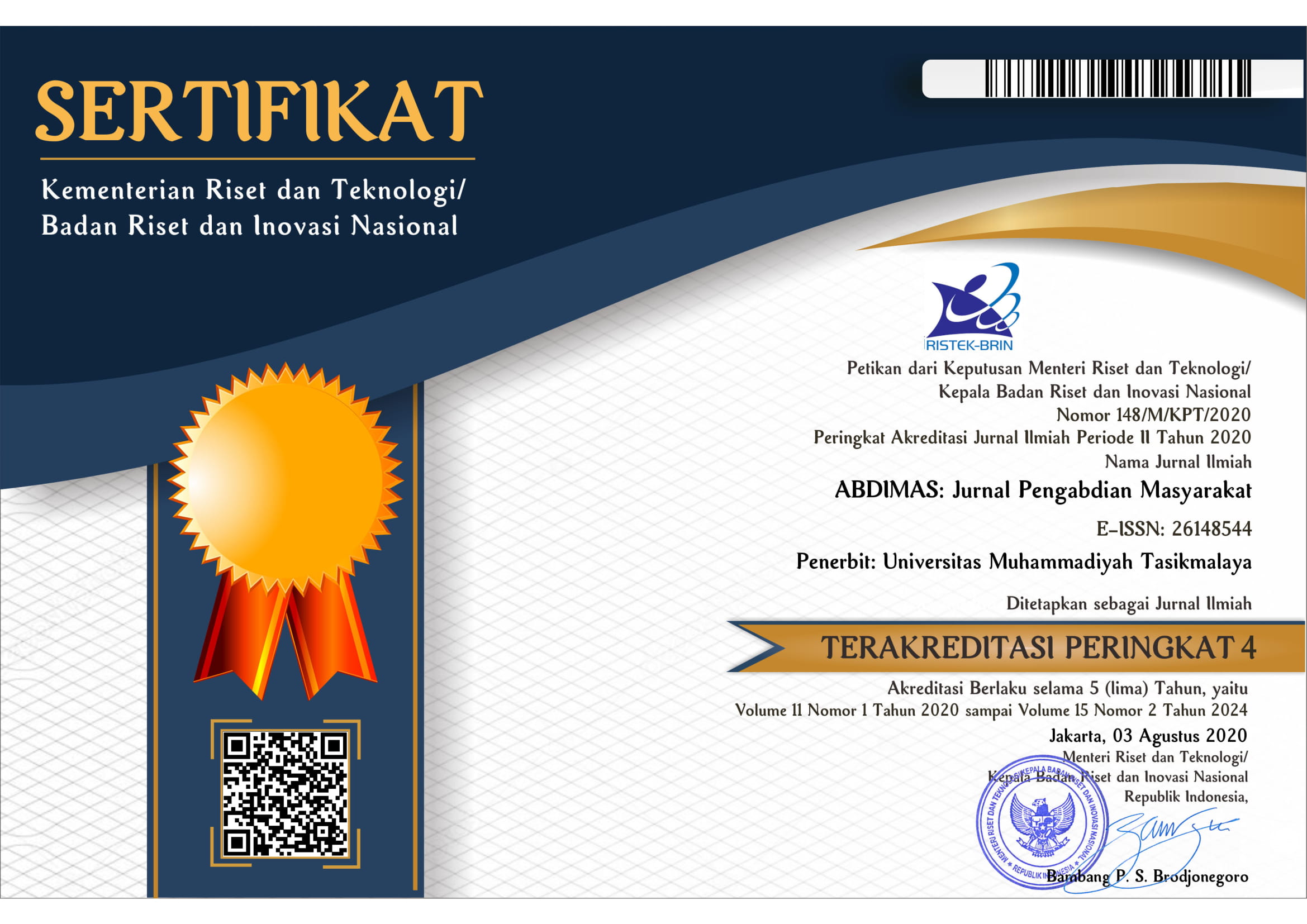Examination of Haemoglobin (HB) Levels of Young Women and Counseling on Iron Deficiency Anemia in Young Women and Administration of Fe Tablets
DOI:
https://doi.org/10.35568/abdimas.v4i2.1475Keywords:
Anemia, Teenage girls, FeAbstract
The problem of iron deficiency is a common problem in developing countries, Indonesia being one of them. One of the targets for increasing iron is young women because it influences growth and development to become pregnant women. The purpose of this community service activity is to check hemoglobin levels and focus on increasing young women's understanding of the situation of iron deficiency anemia during the Covid 19 Pandemic. So that after sense emerges, it is hoped that they will be able to implement awareness to consume Fe tablets. The method used is to provide health education in the form of interactive lectures and check hemoglobin levels. The target of the implementation of this activity is all 20 students of SMP Terpadu Ishlahul Mubtadiin Cihaurbeuti Ciamis grades 7, 8, and 9. The results of laboratory examinations, most of the students did not experience anemia as much as 65%, but there were 35% of students who had anemia, either mild (20%), moderate (10%), and severe (5%). The results of the examination laboratories most big girls do not experience anemia as much as 65%, but there are 35% of students experiencing anemia both mild (20%), moderate (10 %), and weight (5%). Activity devotion people have managed to achieve the purpose of its implementation, namely the increase in understanding adolescent daughter against situation anemia, with the discovery of cases of anemia in target further increase the awareness of the target, especially teenage daughter in changing patterns of life, especially eating food that is nutritious as well pattern rest of the teenagers are.
Downloads
References
A.A.Istri Mira Pramitya, Tience Debora Valentina. 2013. “Hubungan Regulasi Diri Dengan Status Gizi Pada Remaja Akhir.” Jurnal Psikologi Udayana 1(1).
Akib Alfishar, Sri Sumarmi. 2017. “Kebiasaan Makan Remaja Putri Yang Berhubungan Dengan Anemia; Kajian Positive Deviance, Amerta Nutrition.” Amerta Nutrition 1(2). doi: 10.20473.
Ani, L, S. 2016. Buku Saku Anemia Defisiensi Besi. Jakarta: EGC.
Gita Ayuningtyas, Dewi Firiani, Parmah Parmah. 2020. “HUBUNGAN STATUS GIZI DENGAN KEJADIAN ANEMIA PADA REMAJA PUTERI DI KELAS XI SMA NEGERI 3 TANGERANG SELATAN.” Prosiding SENANTIAS 1(1).
Istiany, A. &. Rusilanti. 2013. Gizi Terapan. PT Remaja Rosdakarya.
Kemenkes RI. 2016. SURAT EDARAN NOMOR HK.03.03/V/0595/2016 TENTANG PEMBERIAN TABLET TAMBAH DARAH.
Kementerian Kesehatan Republik Indonesia. 2018. “Hasil Utama Riset Kesehatan Dasar.” Retrieved (https://kesmas.kemkes.go.id/assets/upload/dir_519d41d8cd98f00/files/Hasil-riskesdas-2018_1274.pdf).
Permaesih. 2015. “Faktor-Faktor Yang Mempengaruhi Anemia Pada Remaja.” Buletin Penelitian Kesehatan 23(4).
WHO. 2010. “Anemia among Adolescent and Young Adult Women in Latin America and the Caribbean-














